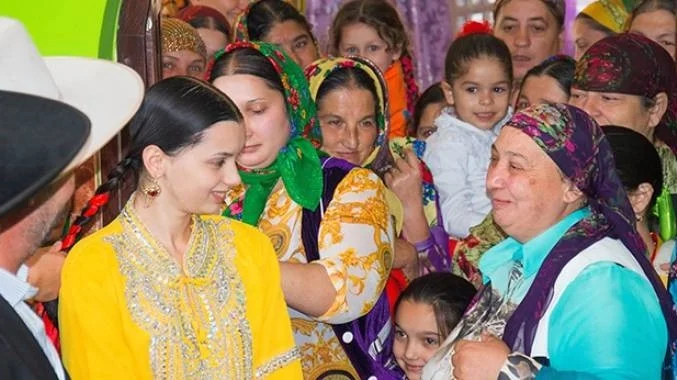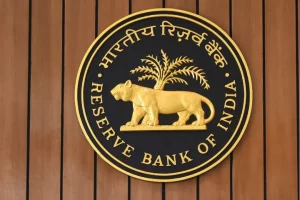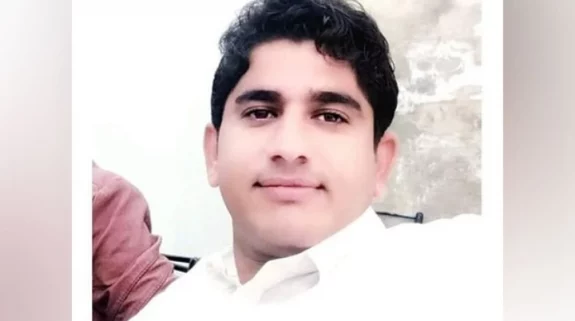The Roma community, which mostly lives in Europe and Balkans but has a diaspora presence worldwide, stands cheek by jowl with India culturally, genetically, linguistically, physically, socially, spiritually and emotionally. History made them our brothers and sisters but destiny put them geographically afar. The centuries-old prejudices and stereotypes against Roma have blurred the understanding of Romani culture that, therefore, has been seen in negative parlance.
The cultural history of the Roma community is composed of the routes they have treaded during their perennial relocation or dislocation rather than the traditional vestiges they had left behind. The changes in the customs, rituals and behavioral patterns of Roma are constantly taking place, mainly because of their constant migration to different countries, transition to modern societies, assimilation and integration with the local population. Nonetheless, a number of Romani groups in several regions/countries manifest and preserve centuries-old ethnic cultural heritage including norms, beliefs, traditional values and practices.
The findings of cultural-anthropological and ethnological studies establish Roma's cultural link with India. Romani scholars unanimously concede to the fact that Roma and India are bound by shared culture and their lifestyle constitutes rich tapestries of beliefs, values, customs and habits which they carried with themselves from India a thousand year ago. Romani scholars also reckon that what unifies the different sub-variants of Romani culture is the motif of their age-old India’s intangible cultural assets.
A prominent Romani scholar Prof. Ian Hancock noted that linguistic, physical and cultural aspects of Roma are very much Indian, even their spiritual and mystical realms of life stand on a lofty pedestal of Indian spirituality and mysticism. Roma is disposed to lead a spiritually balanced life and believe in philosophy of dualism viz. God & Devil, Good & Bad, Permitted & Prohibited and Clean & Polluted, etc., known as Kintala or Kintari in Romani language, is analogous to Indian concept of Karma.

Romani children
Romani Social Institutions Embody the Values and Virtues of Indian Culture
Since family is the indispensable element of social institution for the patriarchal Roma, they attach great importance to their family and lineage. Members of same clan are relatives and expected to extend protection and help to each other in time of need. The clan is strongly bound by ritual ties, and its members are obliged to attend the funeral and pomana (death feast) of person of the same vitsa. The typical extended family of Roma does not consist only of husband, wife and their children but also of uncles, aunts and cousins, grandsons, their married sons and daughters-in-law with their children. The head of Romani household is the eldest man who is a leadership figure for the family, though sometimes a successful son may take on the responsibility of deciding the family’s priorities and decision making.
The kinship among Roma is created by a common ancestor, which unites the relatives from the six- line of parentage. Romani kinship system is identical to Indians, recognizing equally both father’s and mother’s side of the family. The kin are considered to be the direct consanguine ancestor of both parents, no matter how distant the relationship. The roles of Romani men and women in the family are likely to be traditional; usually the woman takes care of the household and the children whereas the man is responsible for earning the livelihood and ensuring the protection of family. Such attributes and structures of Romani family manifest the obvious Indian features.
Roma do not distinguish between sin and crime, so both are equally addressed in Romani jurisprudence. Whenever there is any sin or crime committed by Roma, they go to Kris – the Romani court. Based on Romani customary laws, it deals with cases pertaining to debts, thievery, frauds, abduction of women, violation of code of pollution, marital and properties disputes, etc. within the community. The tribunal, made up of elders of different vitsi (clans) as its members, is a patriarchal council. The court is supervised by more than one judge who is selected from the clan or family not belonging to the party involved. Its every ruling is generally accepted unanimously by the entire community including defendants and plaintiffs, defying the compliance of its judgment results in ostracism from the community. Kris functions more or less like the Panchayat system of traditional India, and refers to both abstract and institutional concepts of justice. The form, composition and rules of procedure in the trials of Romani Kris are analogous to those of Indian Panchayat.
Romani Wedding Ceremony and Rituals Symbolize Indian Marriage
The wedlock among the Roma is considered a binding force whereas separation is looked down upon and discouraged. Generally, the marriage is contracted with the consent of parents and relatives, but sometimes without the girl’s concurrence. The community does not believe in the significance of a formal wedding ceremony under the jurisdiction of a church or a state. The customs and rituals for engagements and marriages vary from one Romani group to another around the world. Roma living in Eastern Europe strongly believe in the significance of the bride virginity, hence they endorse early marriages. Nonetheless, Judith Okely (Travellers–Gypsies 1983) and David Cressy (Gypsies an English History, 2018, P: 238) reported that Romani wedding is endogamous and endogamy is ideally practiced by them irrespective of their variant groups.
Romani customs or civil laws prohibit the marriage between a girl and a boy from the same lineage or kinship. There are different Romani group affiliations like Tin-smiths, Kelderas and bear-leaders who do not marry with one another. Tin-smiths don’t marry settled nomads. Roma generally marry young, more often in their teens. The community solemnizes the marriage, called ‘Biava (Vivah)’, arranged by the couple’s families. The arranged marriage is ideal in the community. The parents look for the right spouses and the prospective brides and bridegrooms who unquestionably assent to parents’ selection. Relatives like aunts and uncles play a role of parents, if the birth parents are absent. There is the main involvement of parents in marriage, because they think that they can see beyond the romantic love, and check the reputation, background and social status of the family of the prospective spouses.
Weddings are usually elaborate and pompous, involving colorful dresses and gold jewelry for the bride. Though during the courtship phase, girls are encouraged to dress beautifully and appealingly in order to obtain the acceptance from the groom. The wedding costumes of Romani bride and bridegroom also stress the similarities between India and Romani dress codes. Romani wedding is in fact a grand ceremony, attended by all relatives and kindred from the same settlements, and other villages and cities. The guests are honoured by a lavish feast and abundance of drinks arranged by parents of the couples. Rejoicing wedding celebration with elaborate rituals, accompanied by traditional music and dance, can last for three days and nights. The guests present gifts and money in kind to the newlyweds as a token of their gratitude. The older married Romani women in Europe wear a glass bead necklace to represent their marital status, corresponding to Indian Mangal Sutra. These common features draw the parallel between Romani and Indian weddings.
Tantamount to age-old wedding tradition of India, after marriage, a Romani woman becomes an integral part of her husband's family and lives in the house of her husband's family. There is a ceremony of Zeita, corresponding to Indian Gauna system, which symbolizes the approval of the bride's departure from her natal home to her father-in-law's house publicly by her family members and relatives present. This ceremony basically takes place after six months or a year of marriage. She establishes rapport with the members of her husband's family including brothers-in-law and sisters-in-law, besides respecting and caring for her mother-in-law and father-in-law. The new bride is guided by her mother-in-law and she is expected to take an active role in the household works including cooking, washing, cleaning the rooms, making the beds. This patrilocality correlates with the usual Indian tradition.
Read More: Roma Holocaust Memorial Day: The forgotten people of Europe
Has India’s Dharmachakra inspired the Roma people’s movement for identity and rights?
(Zameer Anwar is a Senior Research Associate, Centre for Roma Studies and Cultural Relations, Antar Rashtriya Sahayog Parishad (ARSP). Views expressed are personal and exclusive to India Narrative)




















